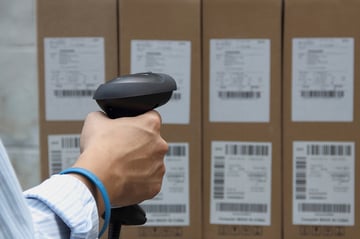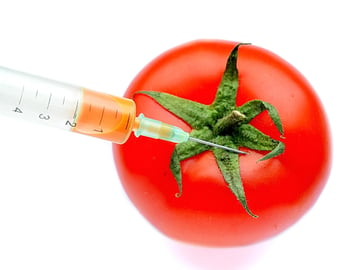One of your most important responsibilities in the food industry is making sure your food is safe to eat. Your reputation is highly fragile. All it takes is one contamination or outbreak for you to lose the trust of your clients or consumers.
One of your greatest needs, then, is a system that allows you to effectively and transparently understand where your food is coming from and how safe it is—which also gives you an easy way to identify and stop an adulterated batch, should one ever arise.
Food Lot Traceability
Food lot traceability is the way most food distributors attempt to keep better tabs on the food products coming in or going out of their business. Chances are, you have multiple types of ingredients coming in, and multiple batches of finished product leaving your facility on a daily basis. No matter how careful you are, and no matter how consistently you follow best practices for safety and sanitation, there’s a chance one of your batches could become contaminated.
A food traceability system that allows you to label and serialize individual products according to the batch in which they were produced is key to reducing your risk. For example, if you use a full delivery of a raw ingredient (such as wheat) in a single batch, you can associate that ingredient with the finished products using a batch/serial number or similar marking. Then, if your raw ingredient is suspected to have an issue, you can easily pull products from distribution that may be affected.
Lot-level food traceability is also useful for keeping track of dates, which is especially important for foods and beverages that have a natural expiration date, or those that can only be shipped within a certain amount of time of its production.
Best Practices for Using Food Lot Traceability Platforms
Though it’s possible to use manual systems for food traceability, today’s technology makes it much easier, safer, and more reliable. If you’re using food lot traceability systems in your supply chain, make sure you adhere to the following best practices:
-
Choose the right food lot traceability platform. First, you’ll want to choose the right food lot traceability product. FoodLogiQ Connect was designed for use by a wide range of different food suppliers and distributors. It comes with a number of features to improve food safety and food quality, and gives transparency to end clients while minimizing the potential costs of recalls with greater traceability, thanks to a core food lot traceability system.
You should also know that different types of food lot traceability solutions exist. Some of these types include distribution tracking software, inventory management software, warehouse tracking software, manufacturing resource planning, and manufacturing execution software. Depending on your business type and needs, you may need some or all of these types of software.
-
Establish and document a clear system. Even using an app, it’s possible that your employees will follow procedures in different ways. If you want to prevent as many incidents as possible and make life easier for your employees, you should create a Standard Operating Procedure (SOP) guide that clearly explains how and when to use the system, as well as who is responsible for its oversight.
-
Train your employees effectively. Ultimately, this guide should serve as a reference for employees who are already familiar with your system. It’s still your responsibility to train your employees on that system as effectively as possible, and in a direct way. If you hire someone new, make sure their trainers are up-to-date with the latest procedures, and informed enough to answer any questions they might have.
-
Associate each attribute with a distinguishable number. You’ll want to create the most detailed system you can without running the risk of overcomplicating the process. Systems like the GTIN have created a global language for supply chains to communicate important product information.
If you want your food distribution to remain as safe, controlled, and traceable as possible, you’ll need to have some kind of food traceability solution in place.
With the right product on your side, everything will run smoother — and in the event of a crisis, you’ll minimize the reputational and fiscal damage to your company while improving over time. True traceability is one of the cornerstones of the modern supply chain, and FoodLogiQ can help you get there.
Other posts you might be interested in
View All Posts
Food Safety
8 min read
| February 7, 2017
3 Food Safety Stats That Underscore the Need for Traceability
Read More
Food Industry
6 min read
| September 13, 2018
Ensure Food Safety & Build Customer Loyalty in Dog-friendly Restaurants
Read More
Food Industry
6 min read
| September 20, 2018



